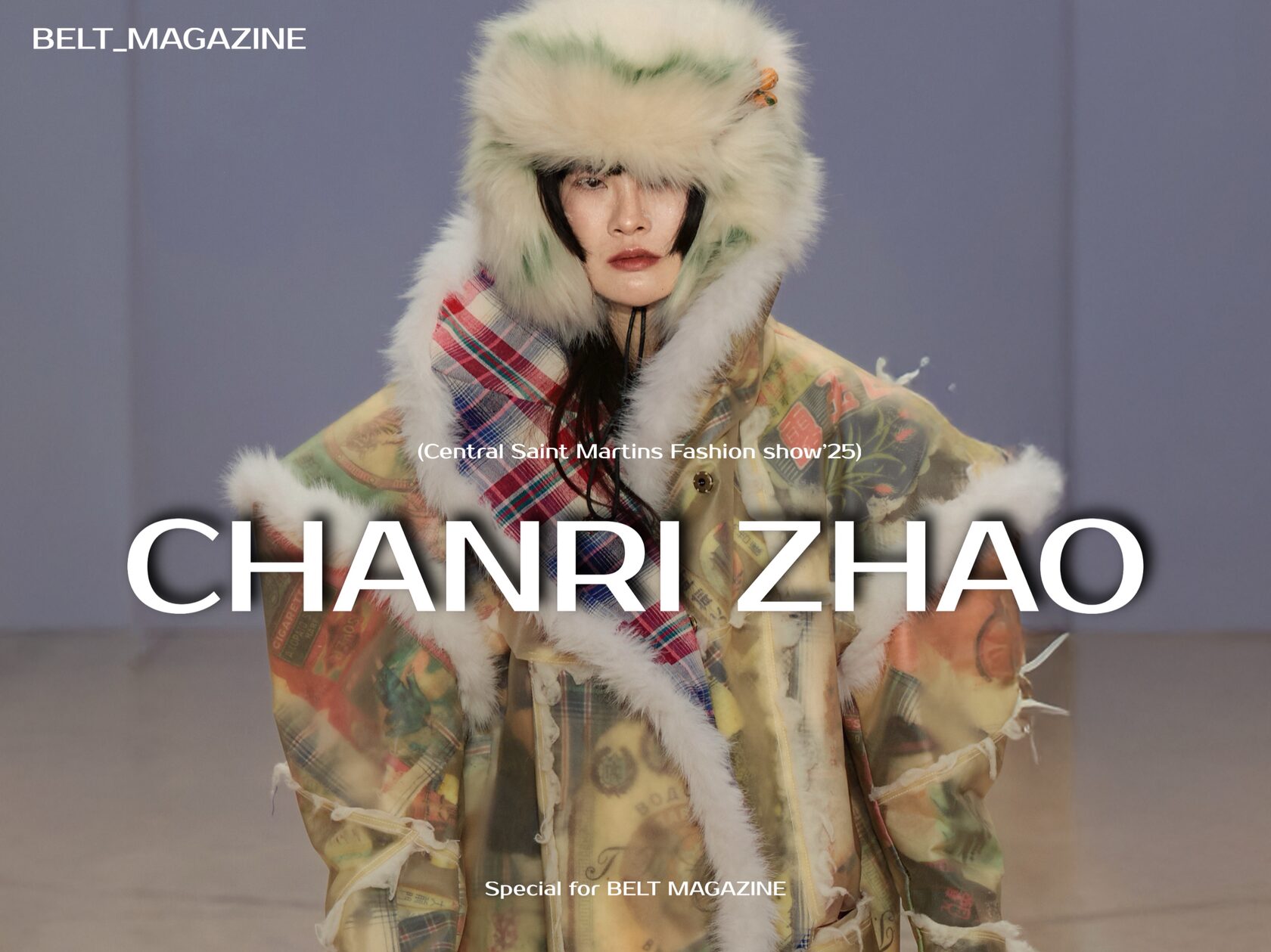A new week, which means it's the perfect time to continue our series of articles "Confessions of Central Saint Martins Students" and introduce you to another graduate — Chanri.
Chanri has been interested in fashion for not very long, although she has been passionate about art since childhood and has always loved creating something new and unusual. Her fascination with fashion began after high school, following her reading of a book about Alexander McQueen. It has been six years since then.
Recently, she presented her graduation collection titled "Frozen Echo." And indeed, if we look at the looks, we can notice elements of an "icy" and "frosty" aesthetic.
Chanri lives in Harbin, a city located on the border with Russia and the capital of China's northernmost district. In some parts of Harbin, winter temperatures drop to -40 degrees Celsius. Therefore, it is not surprising that the girl was inspired by winter aesthetics.
"My project is dedicated to the past and present of Harbin and emphasizes its unique identity. As for the silhouette, I combined clothing from early 20th-century Harbin with modern habits of its residents," explains Chanri.
Chanri has been interested in fashion for not very long, although she has been passionate about art since childhood and has always loved creating something new and unusual. Her fascination with fashion began after high school, following her reading of a book about Alexander McQueen. It has been six years since then.
Recently, she presented her graduation collection titled "Frozen Echo." And indeed, if we look at the looks, we can notice elements of an "icy" and "frosty" aesthetic.
Chanri lives in Harbin, a city located on the border with Russia and the capital of China's northernmost district. In some parts of Harbin, winter temperatures drop to -40 degrees Celsius. Therefore, it is not surprising that the girl was inspired by winter aesthetics.
"My project is dedicated to the past and present of Harbin and emphasizes its unique identity. As for the silhouette, I combined clothing from early 20th-century Harbin with modern habits of its residents," explains Chanri.
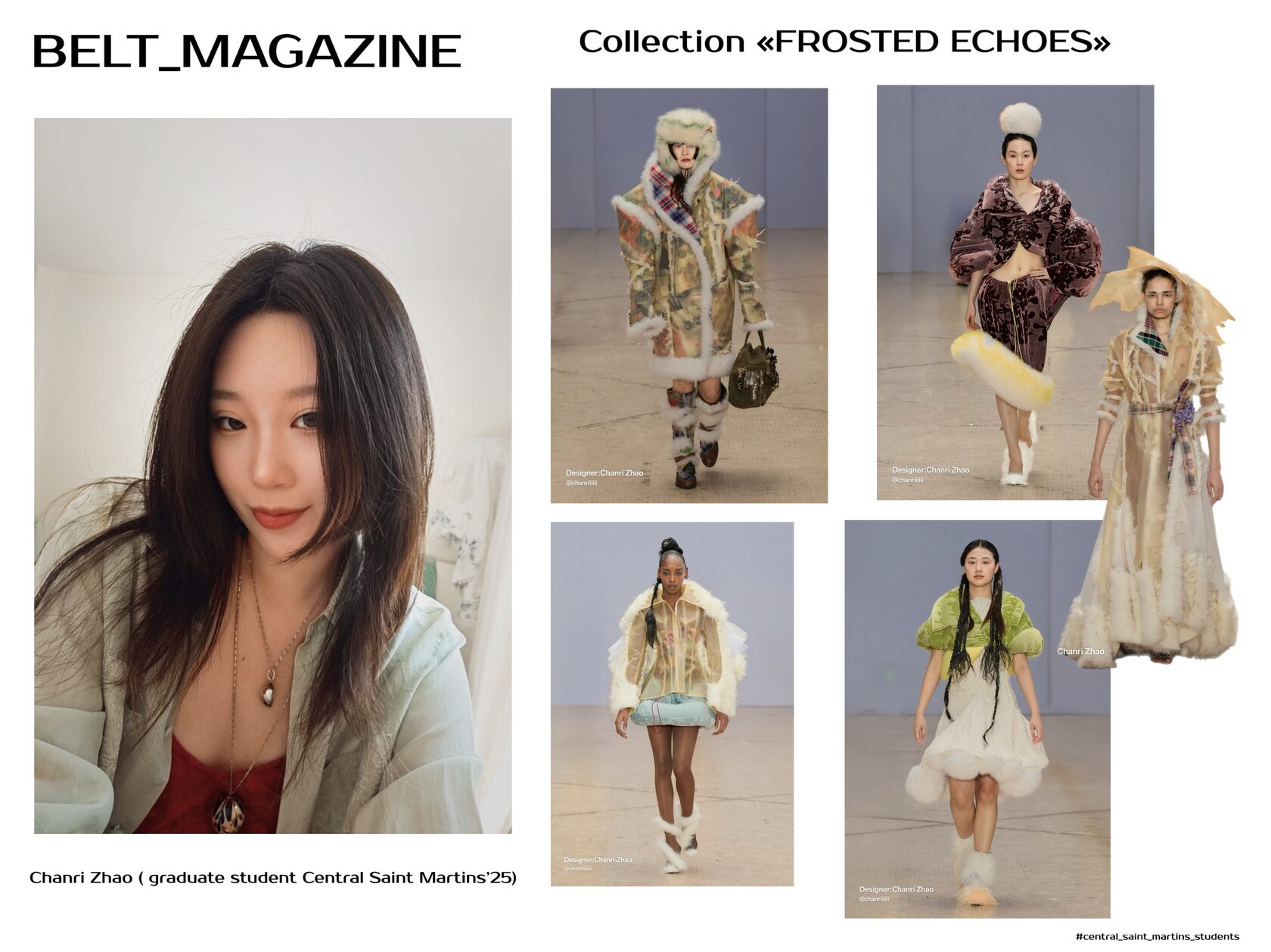
We selected several looks from the collection and asked Chanri to tell us more about them.
Look: "Frost-Trapped Jacket"
The look is made primarily from semi-transparent sheepskin, and Chanri decided to preserve the natural pale yellow hue of the leather..
Look: "Frost-Trapped Jacket"
The look is made primarily from semi-transparent sheepskin, and Chanri decided to preserve the natural pale yellow hue of the leather..
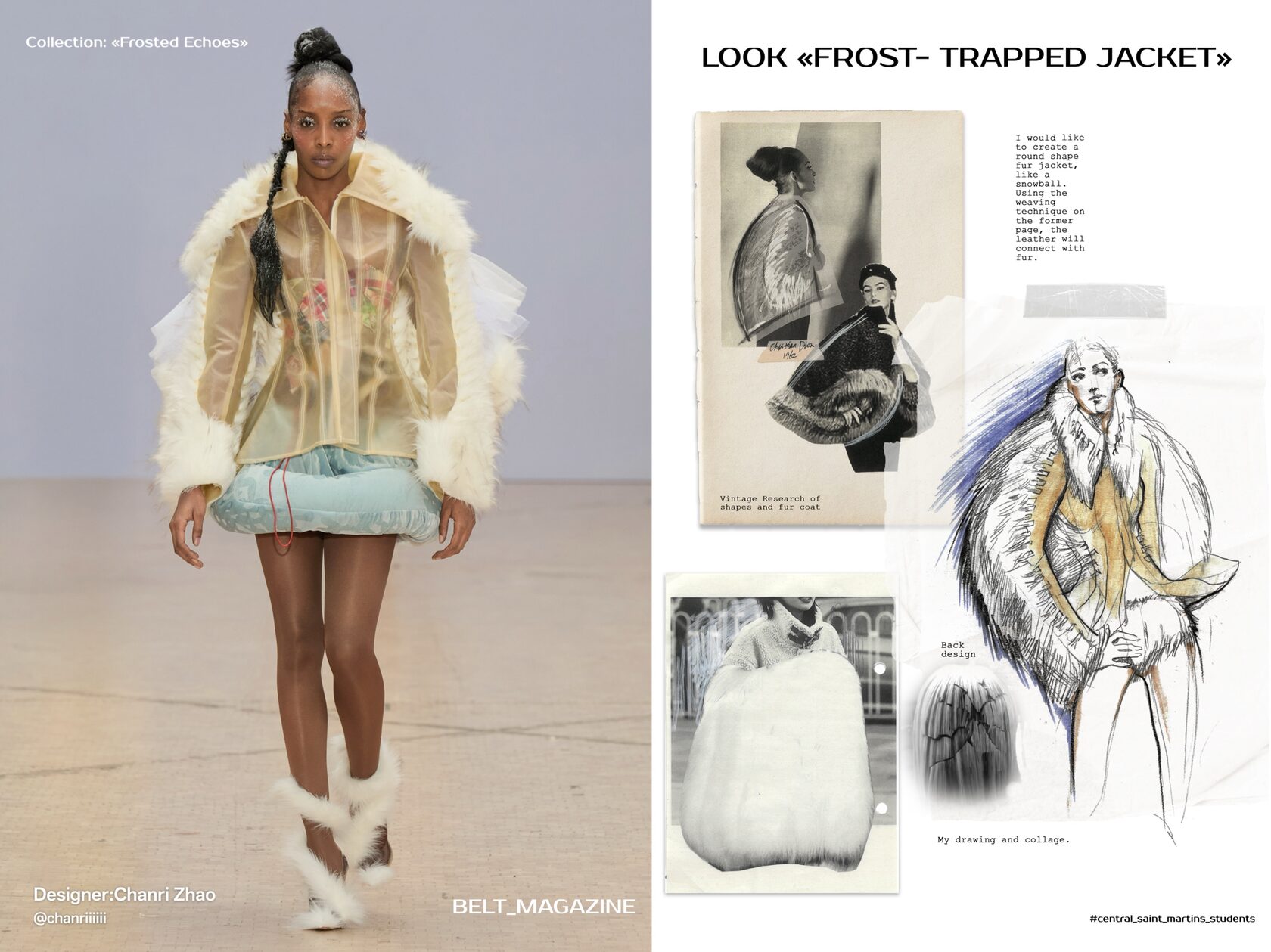
The shade of the skirt was inspired by a photograph of the frozen Sungua River, taken by a girl. In the photo, workers were extracting ice blocks from the river to create ice sculptures.
"Under the reflection of the sky, the crystal-clear ice took on a beautiful icy blue hue, and it was this shade of blue that I decided to use," Chanri shared.
"Under the reflection of the sky, the crystal-clear ice took on a beautiful icy blue hue, and it was this shade of blue that I decided to use," Chanri shared.
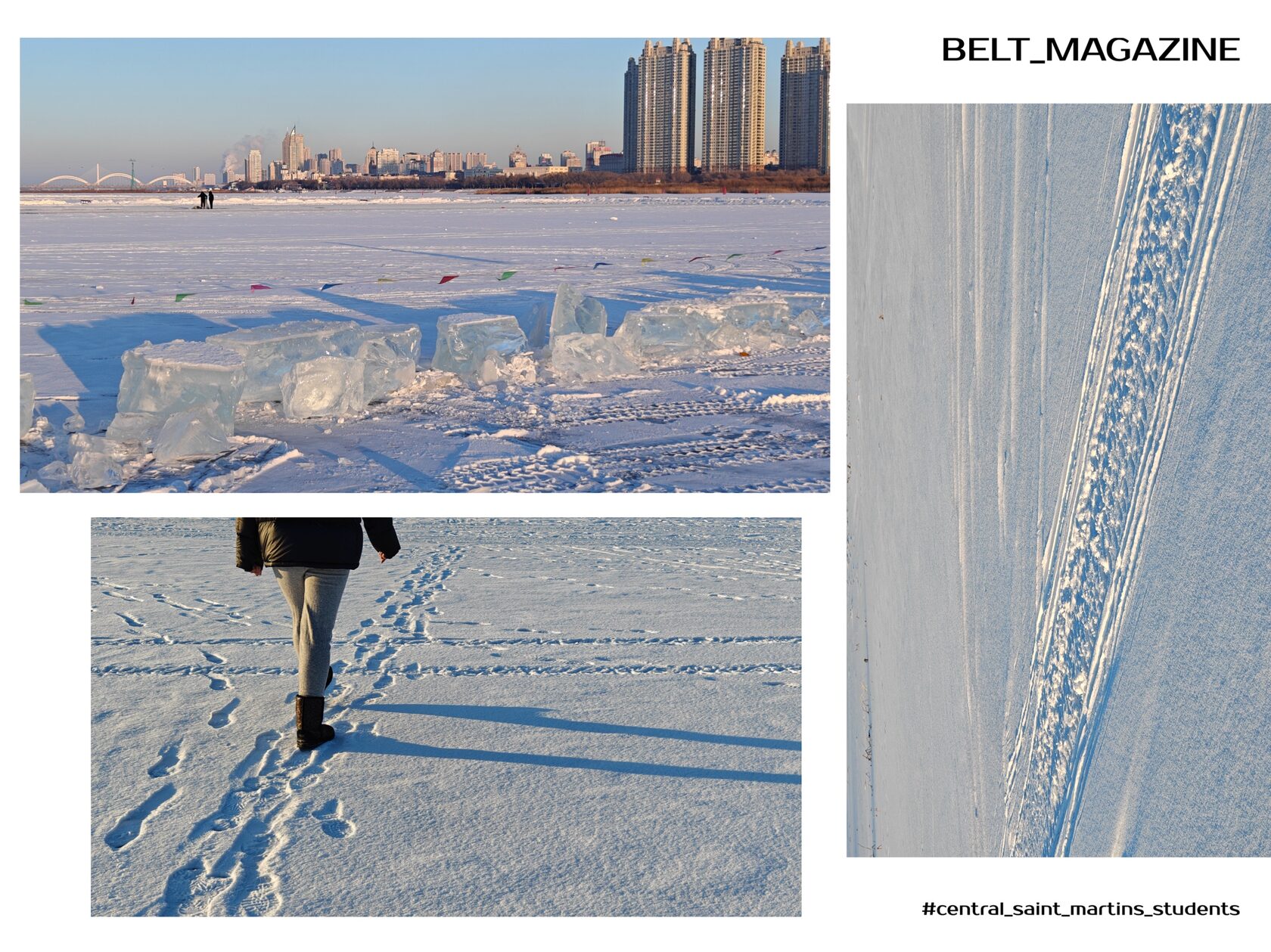
The most interesting part of this look is the jacket. It was the first piece created for this collection, and for Chanri, it was her first experience designing clothing from genuine leather. The back of the jacket, with its intricate texture and fur pattern, is especially fascinating.
"During the summer, I experimented by freezing fur inside ice blocks, and I was captivated by the contrast between the softness of the fur and the hardness of the ice. Inspired by this 'visual tension,' I tried to recreate a similar effect in the jacket by intertwining semi-transparent leather with fur. It maintains a fashionable and bold appearance, but there is also a sense of softness and charm — a contrast that I find particularly appealing," Chanri shared.
"During the summer, I experimented by freezing fur inside ice blocks, and I was captivated by the contrast between the softness of the fur and the hardness of the ice. Inspired by this 'visual tension,' I tried to recreate a similar effect in the jacket by intertwining semi-transparent leather with fur. It maintains a fashionable and bold appearance, but there is also a sense of softness and charm — a contrast that I find particularly appealing," Chanri shared.
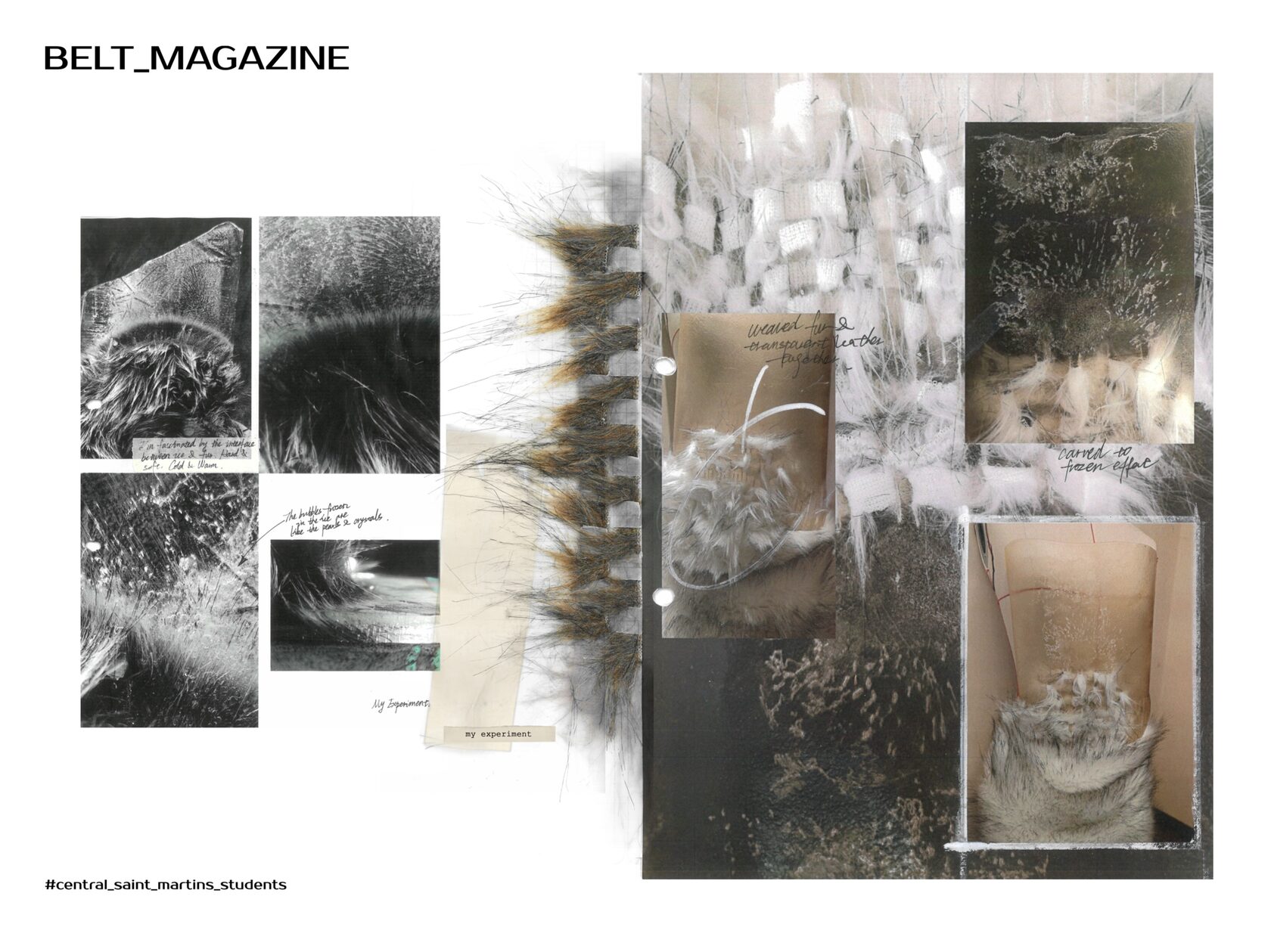
The most challenging part of creating the look was the weaving process, and sewing the leather was also not easy. According to the designer, the entire process took approximately four days.
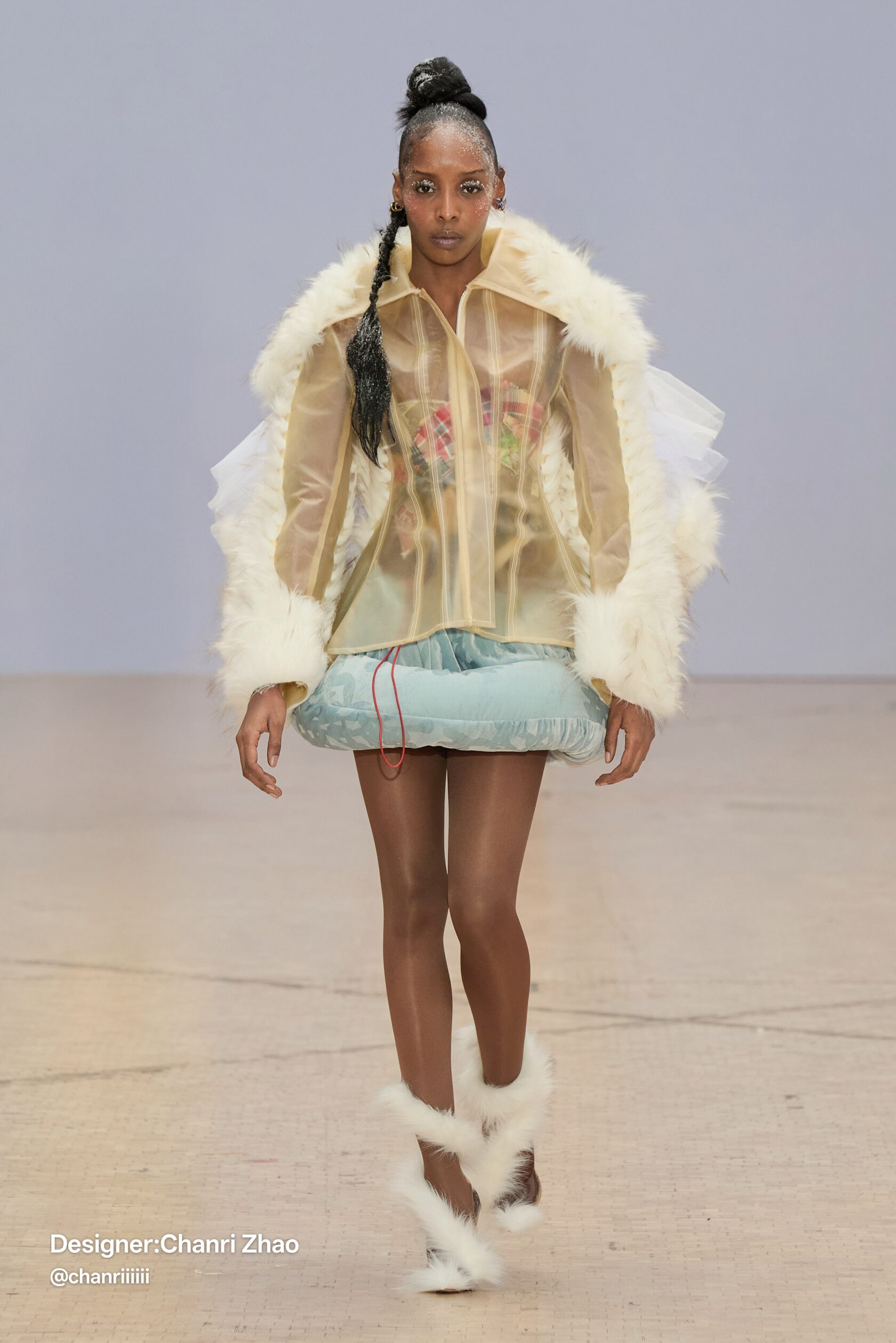
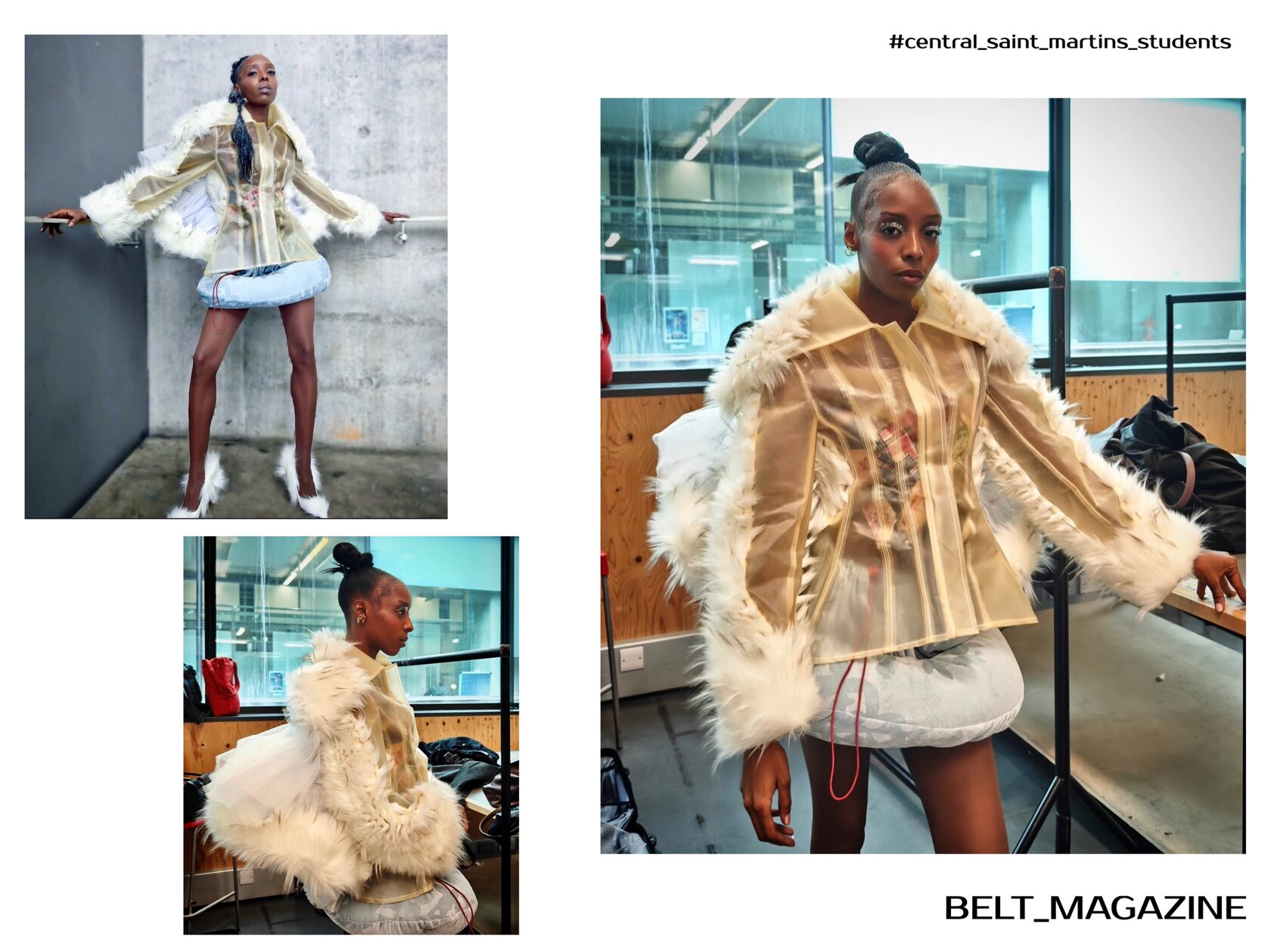
Look: "Posters Coat"
This look is the most vibrant in the collection. Its color palette is composed of elements from over 20 vintage posters from Harbin, each vividly reflecting the city's past.
This look is the most vibrant in the collection. Its color palette is composed of elements from over 20 vintage posters from Harbin, each vividly reflecting the city's past.
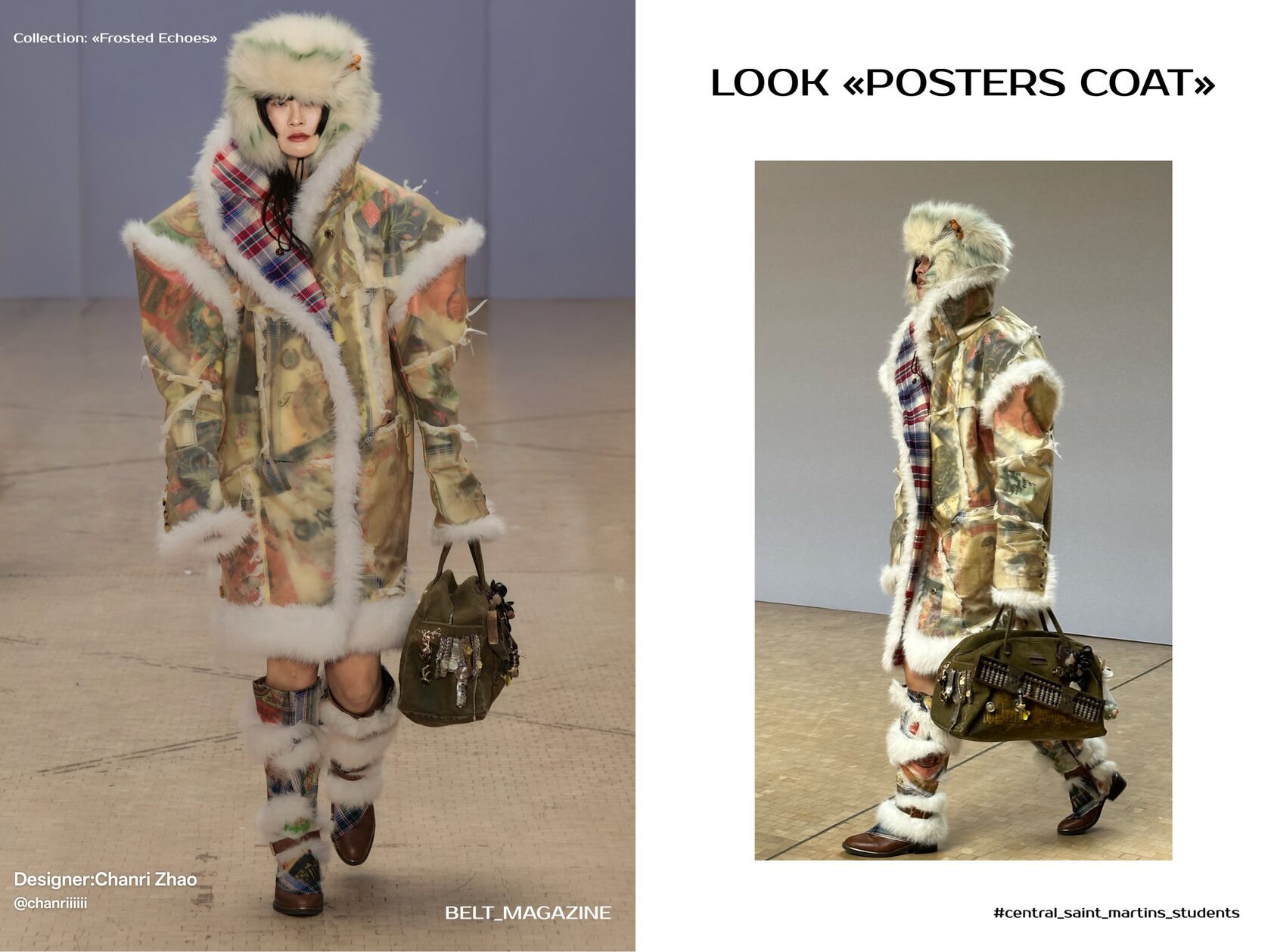
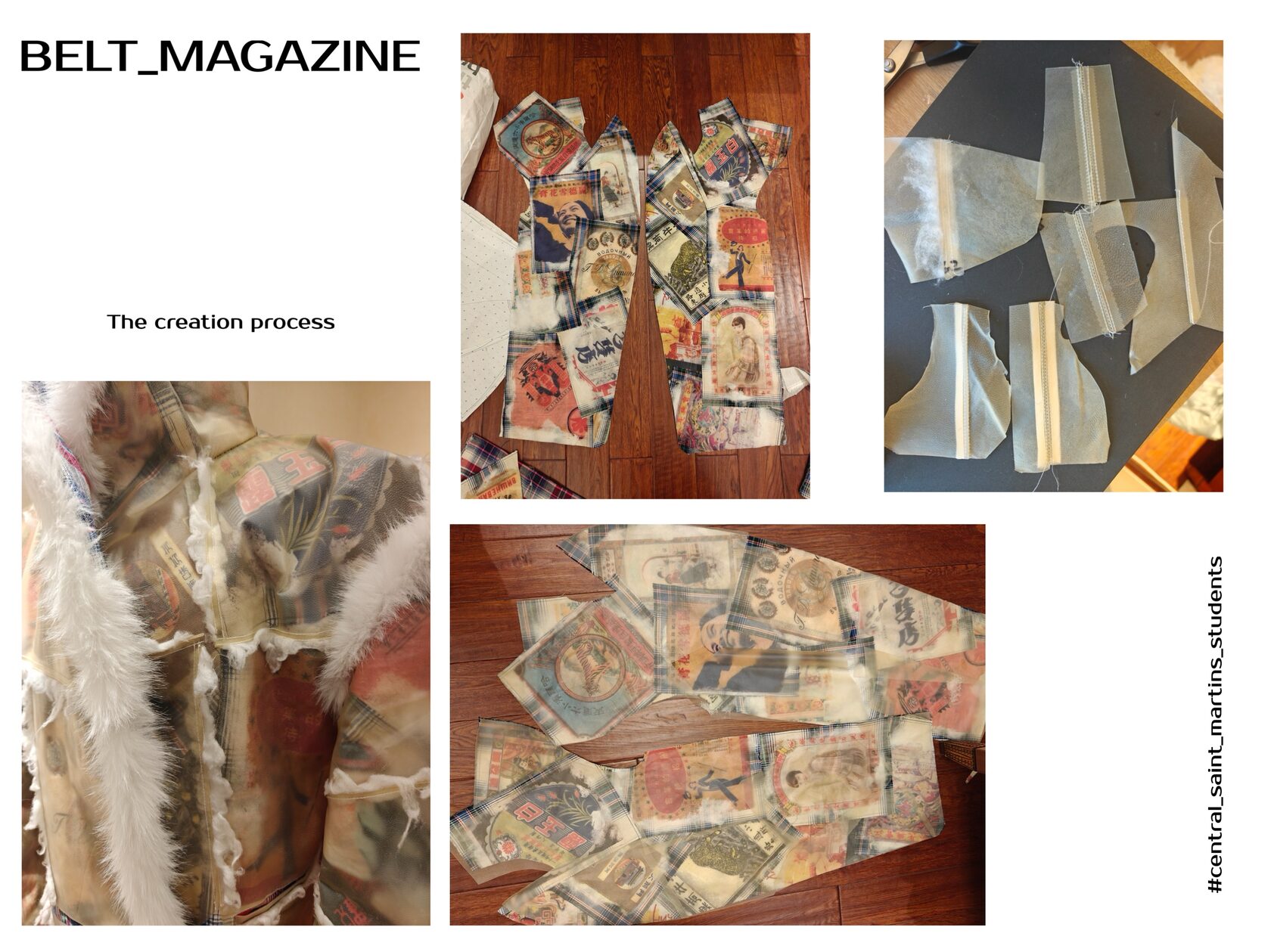
"These rich colors are layered beneath a pale yellow leather, giving the piece a nostalgic retro tone. The inner lining is made from traditional fabric originating from Chunmin (Shanghai). Such a style was very popular in the houses of the past century."
The collection reflects both the past and present of Harbin, and this look, in terms of aesthetics, leans more towards the past. In the last century, Harbin thrived as an important hub connecting Europe and Asia, with vibrant activity across many industries.
"I was also inspired by street vendors of that time. They were men dressed in heavy robes, carrying leather bags filled with all kinds of goods as they moved through the streets and alleys of Harbin. Even for those unfamiliar with Harbin or that era, this look can evoke a sense of atmosphere and nostalgia."
The collection reflects both the past and present of Harbin, and this look, in terms of aesthetics, leans more towards the past. In the last century, Harbin thrived as an important hub connecting Europe and Asia, with vibrant activity across many industries.
"I was also inspired by street vendors of that time. They were men dressed in heavy robes, carrying leather bags filled with all kinds of goods as they moved through the streets and alleys of Harbin. Even for those unfamiliar with Harbin or that era, this look can evoke a sense of atmosphere and nostalgia."
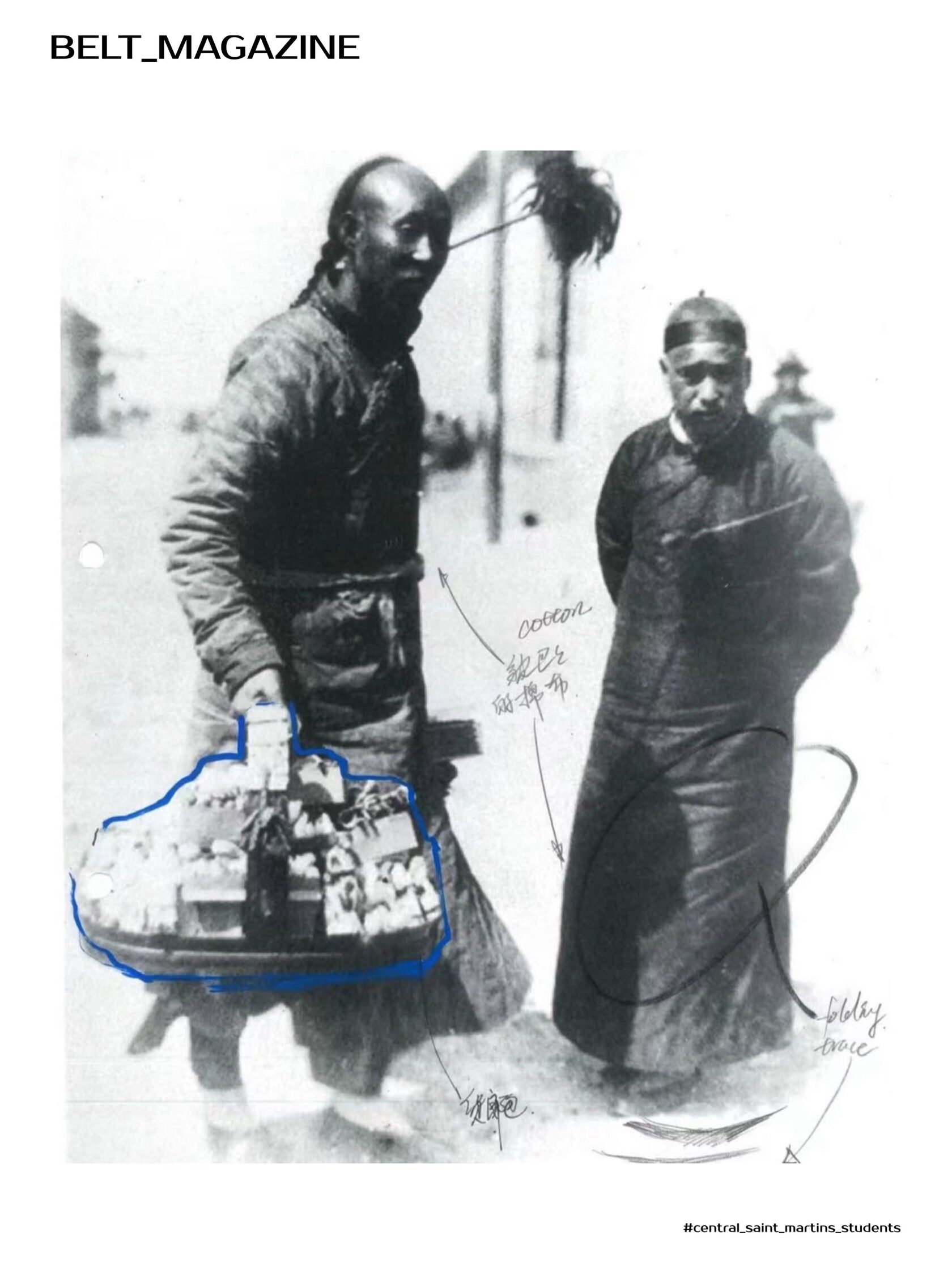
This look was created over a long period. The images from the posters were first printed on cotton fabric layered over traditional textile, and then carefully cut into pieces that were later sewn together. The leather, which is placed on the surface, was also sewn and assembled in parts. Overall, the process took about a week.
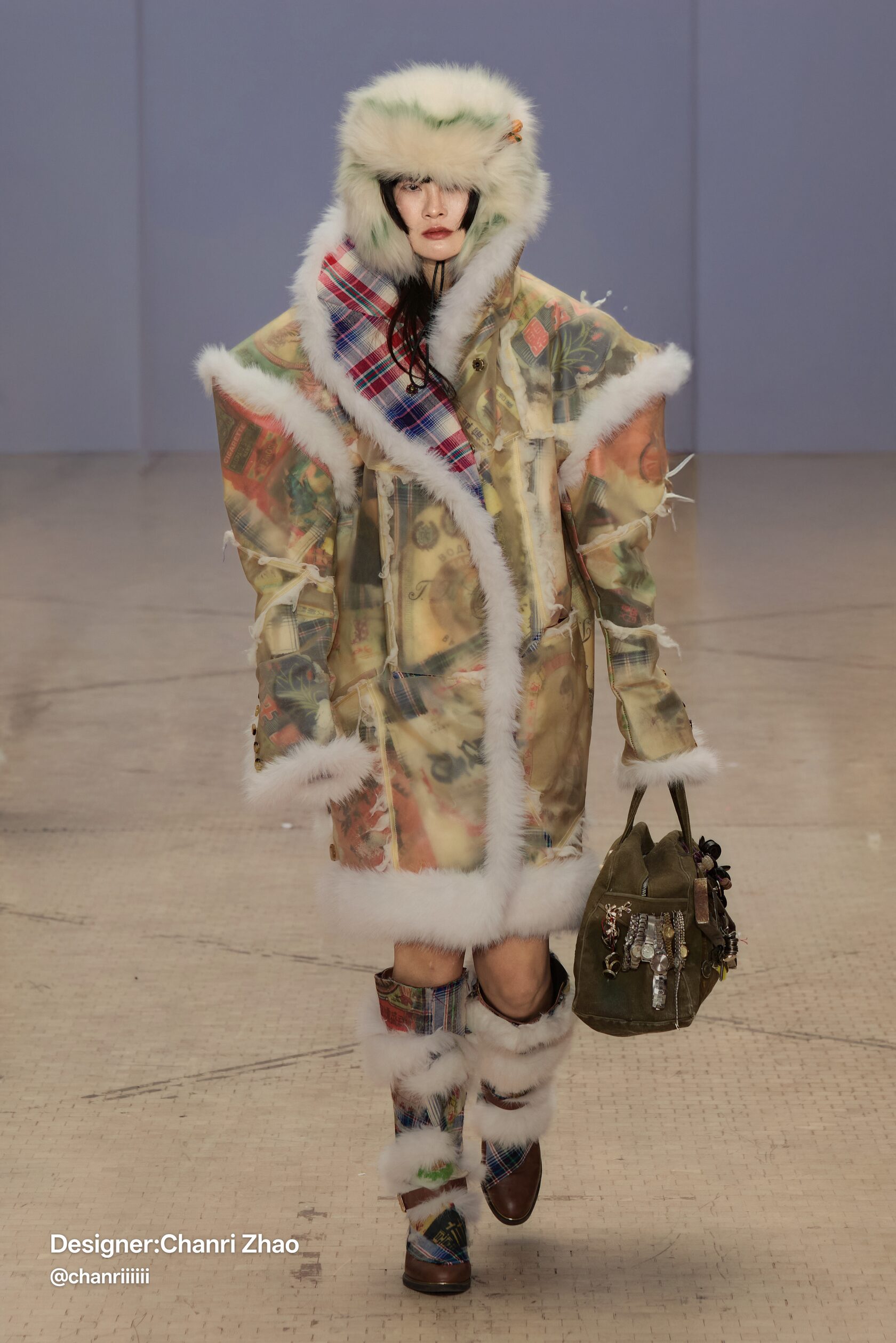
Look: "Snowfall Puffer Suit"
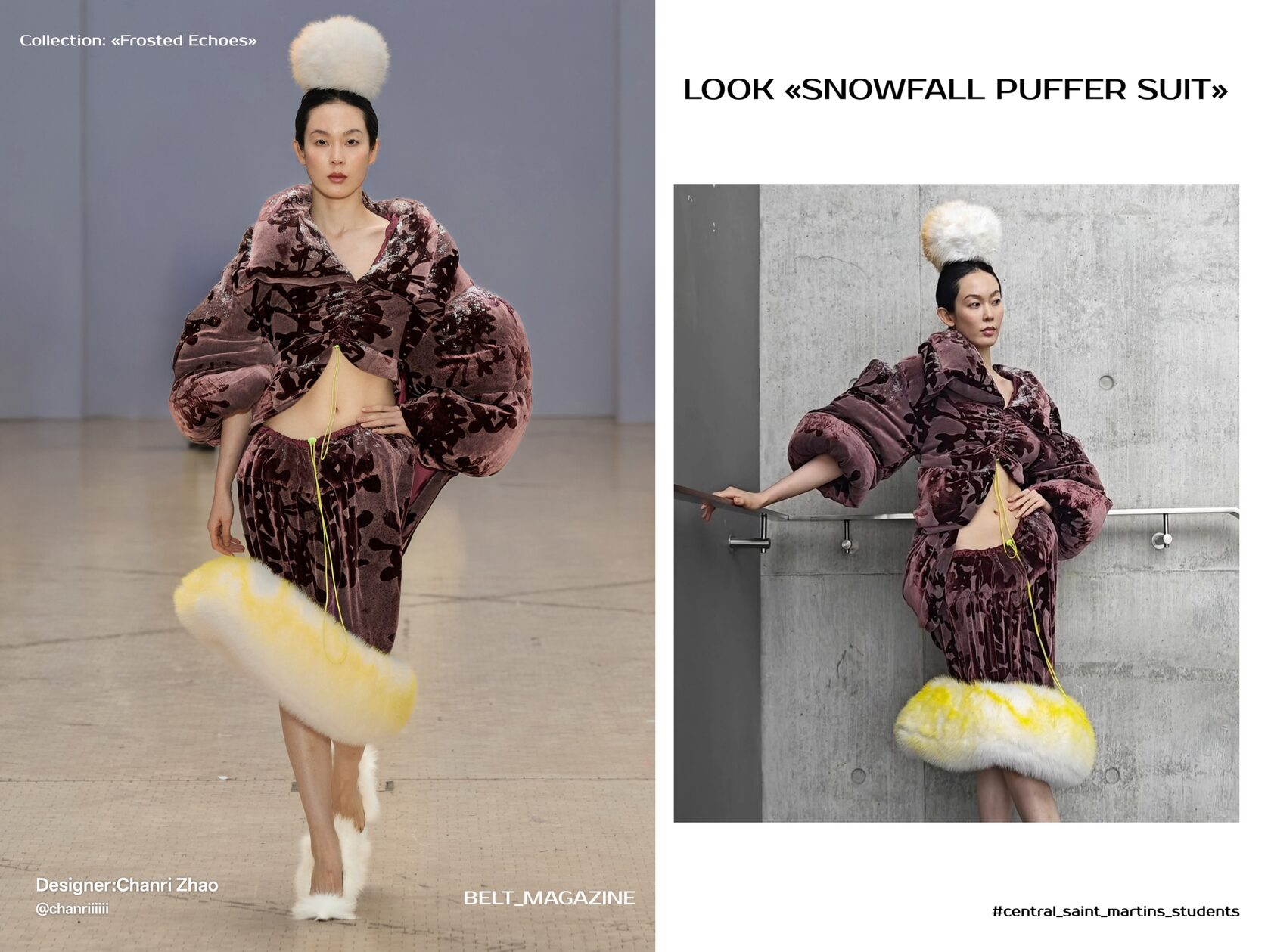
The color of this look was inspired by a velvety bag from the Baroque Museum collection in Daowei, Harbin. The bag is made in a rich brown color with elegant embossed patterns—using the flocking technique, which was considered very luxurious at the time.
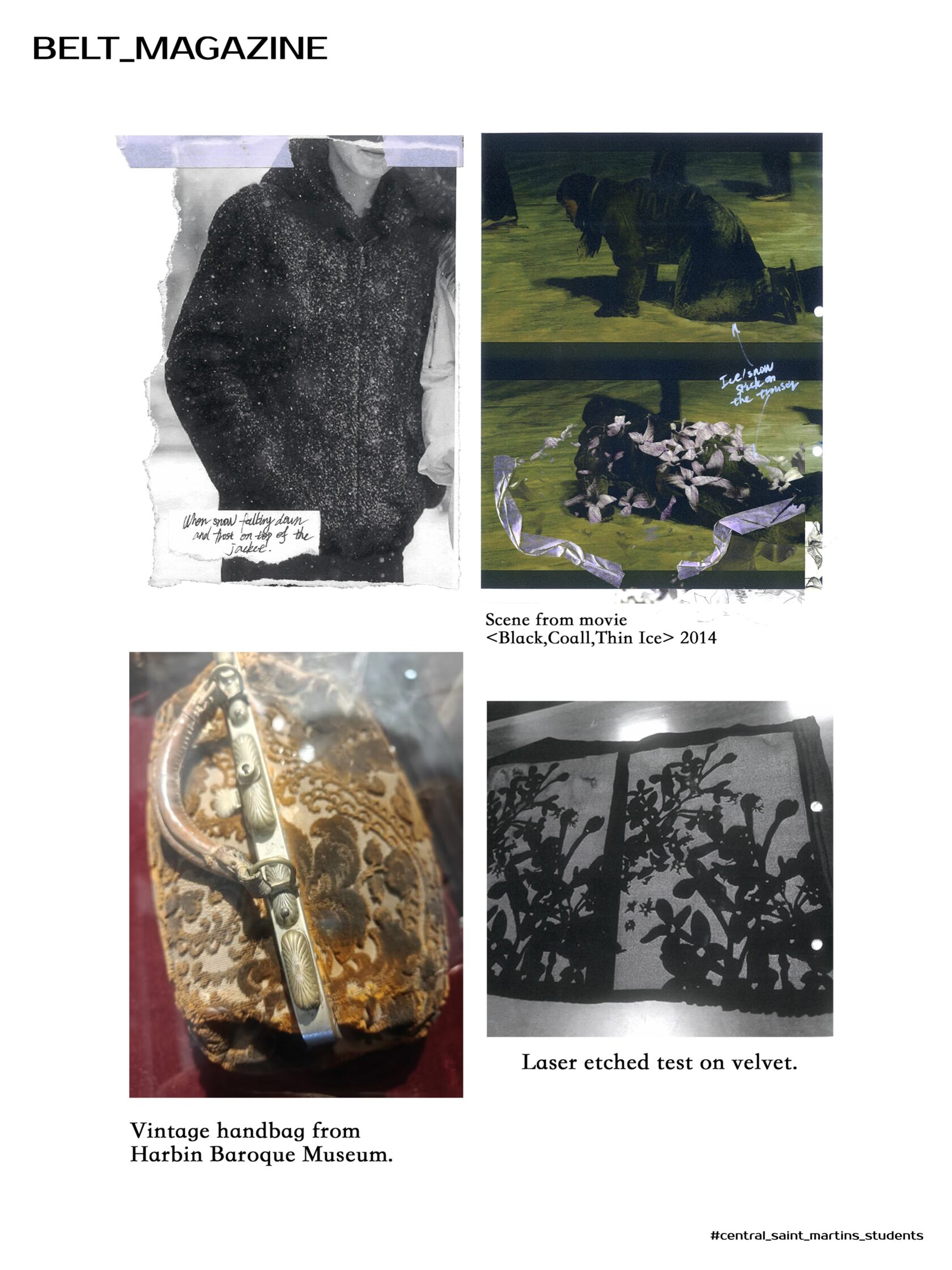
"I chose a mahogany shade, close to the original color but with a slightly more modern tone so that the look wouldn't appear too vintage," Chanri explained.
Winter fashion in Harbin is inextricably linked to the iconic down jacket. Chanri wanted to reimagine this utilitarian element through her aesthetic lens, infusing it with the spirit of vintage elegance. Delicate snowflakes adorned the velvet fabric, creating subtle variations in texture—like soft brushstrokes of time on a canvas.
Winter fashion in Harbin is inextricably linked to the iconic down jacket. Chanri wanted to reimagine this utilitarian element through her aesthetic lens, infusing it with the spirit of vintage elegance. Delicate snowflakes adorned the velvet fabric, creating subtle variations in texture—like soft brushstrokes of time on a canvas.

Creating this costume took the designer approximately 2-3 days.
Look: "Ice Crack Trench Coat"
The main color of the coat, as in other looks, preserves the natural pale yellow hue of semi-transparent sheepskin and is complemented by a plaid pattern made from traditional Chunmin fabric. At the waist, there is a bouquet of lilacs, crafted using a delicate velvet flower technique called Ronghua. Lilac is the city flower of Harbin and holds a special place in the designer's childhood memories, making it an integral part of this design.
Look: "Ice Crack Trench Coat"
The main color of the coat, as in other looks, preserves the natural pale yellow hue of semi-transparent sheepskin and is complemented by a plaid pattern made from traditional Chunmin fabric. At the waist, there is a bouquet of lilacs, crafted using a delicate velvet flower technique called Ronghua. Lilac is the city flower of Harbin and holds a special place in the designer's childhood memories, making it an integral part of this design.
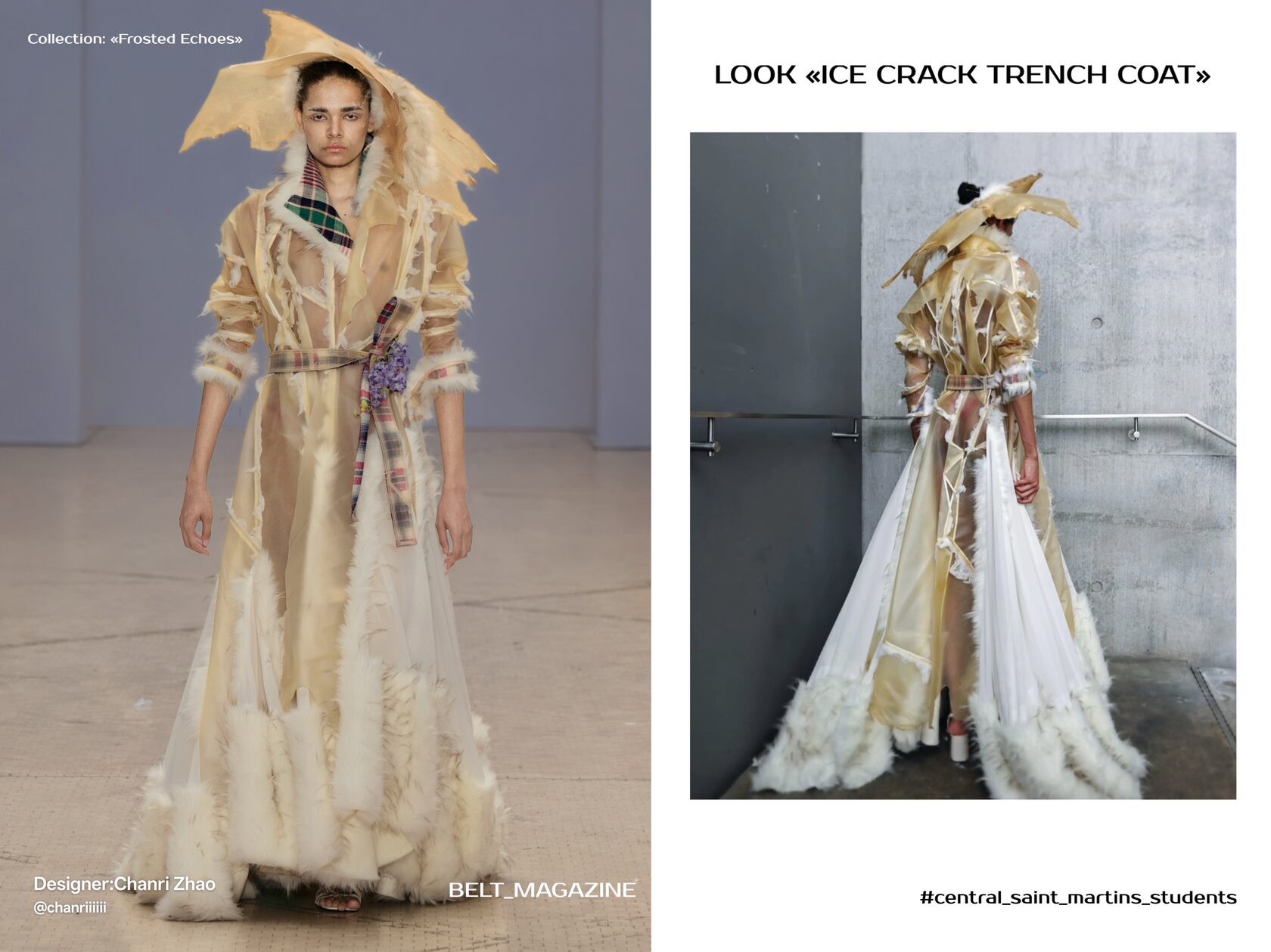
"This look is created with an emphasis on mindful consumption, as most of the leather is made from remnants of the production of the previous two pieces. Cotton and fur inserts in the seams imitate the texture of cracks in ice. The chiffon woven into the hem, combined with heavy fur, creates a striking contrast. The weight of the garment gives it a unique sense of movement, making the look dynamic," Chanri explained.

The creation of this look also took about a week. Every seam on the garment was finished with edging, which was labor-intensive and time-consuming.
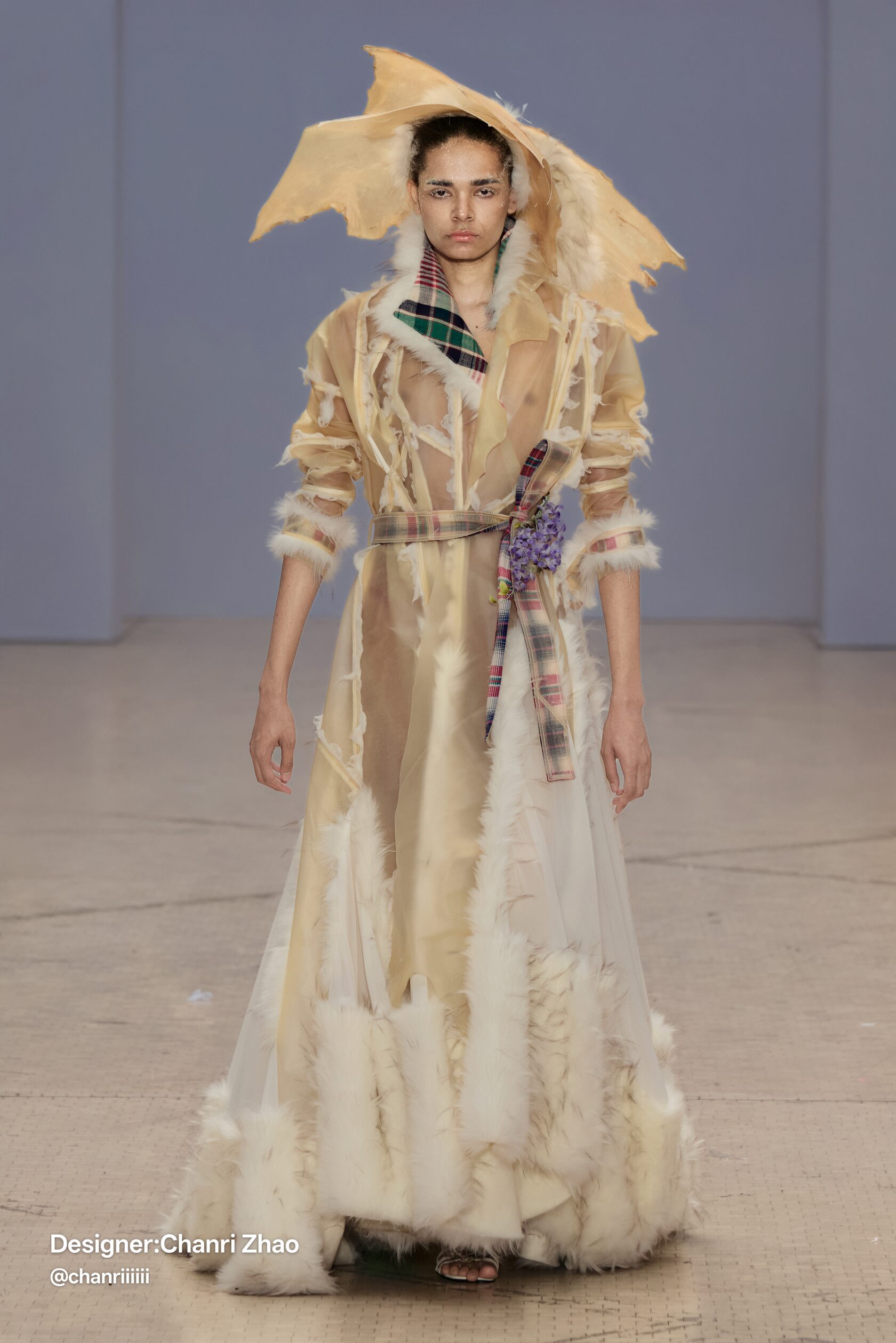
Look: Snowball Dress
The color palette of this look was inspired by a film that the designer watched once — "Black Coal, Thin Ice." The film tells the story of a murder case that took place in Harbin in 1999.
The color palette of this look was inspired by a film that the designer watched once — "Black Coal, Thin Ice." The film tells the story of a murder case that took place in Harbin in 1999.
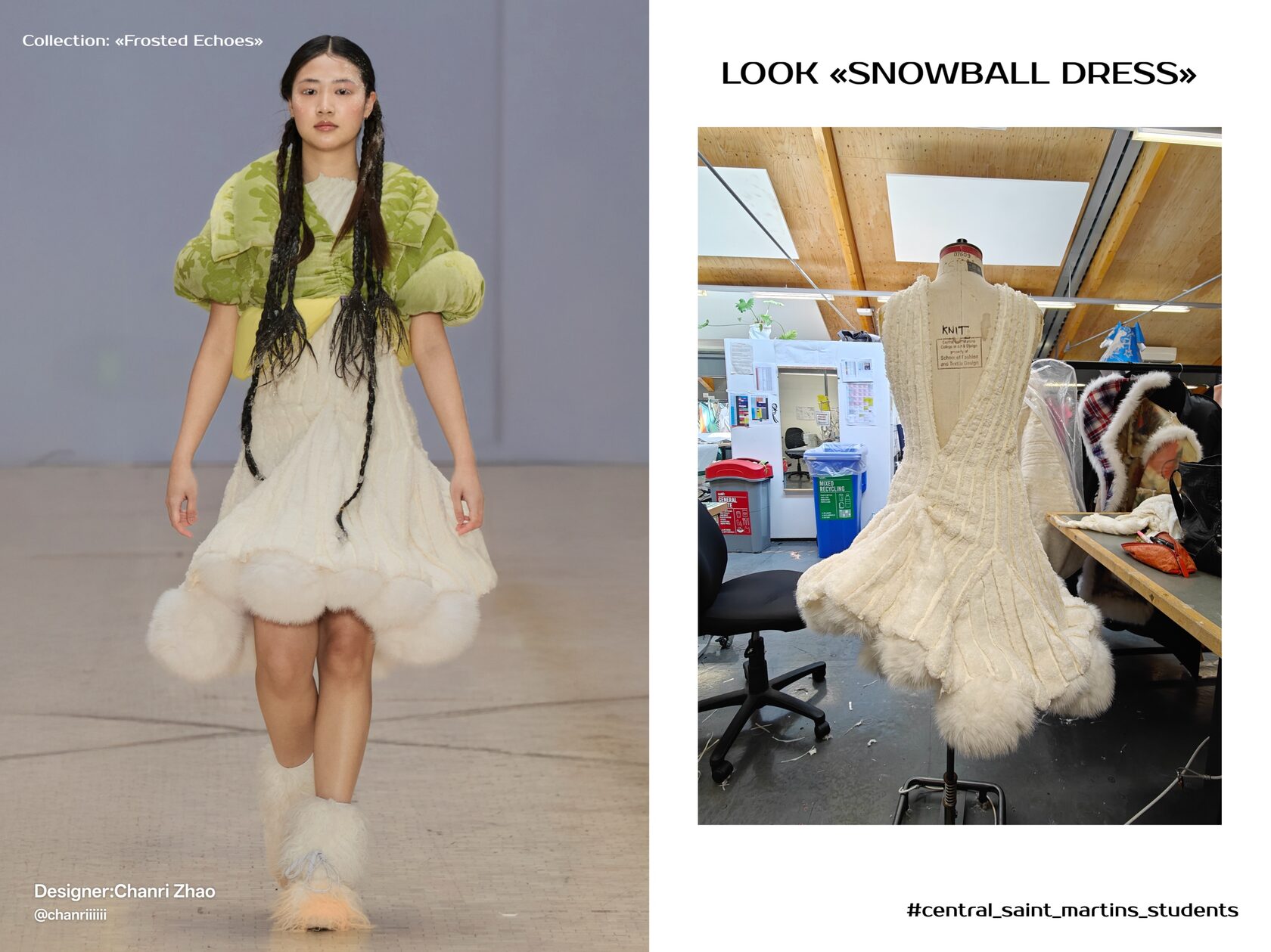
"I was struck by the cold yet vibrant neon lights in the film — they made a deep impression on me. The most striking and attention-grabbing color in this series was turquoise-green, which I directly drew from this look. I enjoy adding bright accents to otherwise muted and somber tones, creating a balance between restraint and a touch of passion."
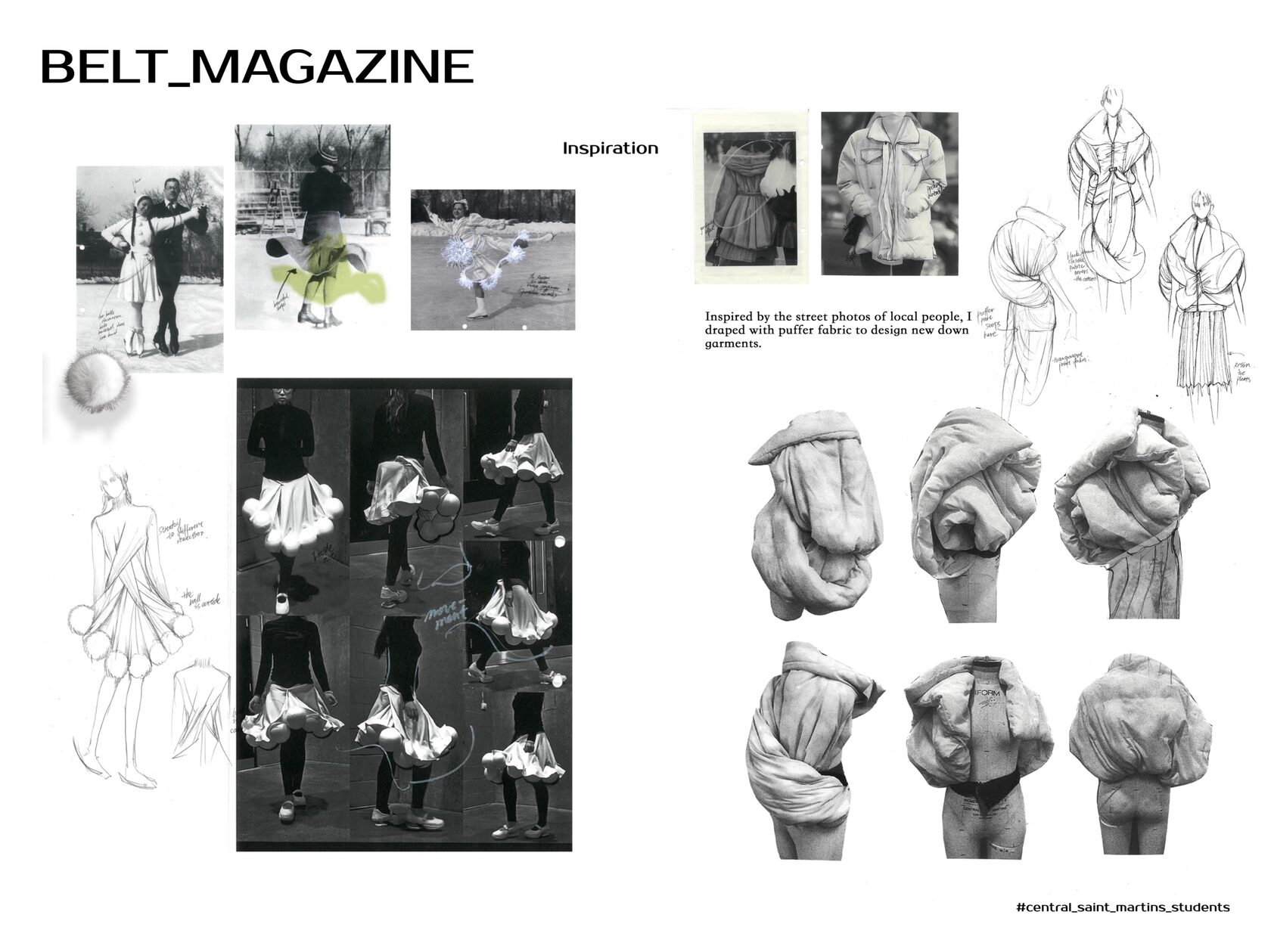
This outfit is the most playful and dynamic in the entire collection. It was inspired by a series of vintage photographs of Russian émigrés skating in Harbin during the winter of the last century. Ice skating has always been a typical winter pastime for the city's residents.
"Since childhood, my family took me to the ice rink every winter. I wore a hat with white pom-poms that bounced and swayed as I moved across the ice. While creating this look, I hope to evoke joyful childhood memories — moments of innocence, movement, and pleasure."
Transforming the fabric for this piece took a lot of time. The designer cut fleece fabric into strips about a meter long and connected them with knitted strips using a special technique to create the effect of a pleated skirt. The entire process took approximately three days.
"Since childhood, my family took me to the ice rink every winter. I wore a hat with white pom-poms that bounced and swayed as I moved across the ice. While creating this look, I hope to evoke joyful childhood memories — moments of innocence, movement, and pleasure."
Transforming the fabric for this piece took a lot of time. The designer cut fleece fabric into strips about a meter long and connected them with knitted strips using a special technique to create the effect of a pleated skirt. The entire process took approximately three days.
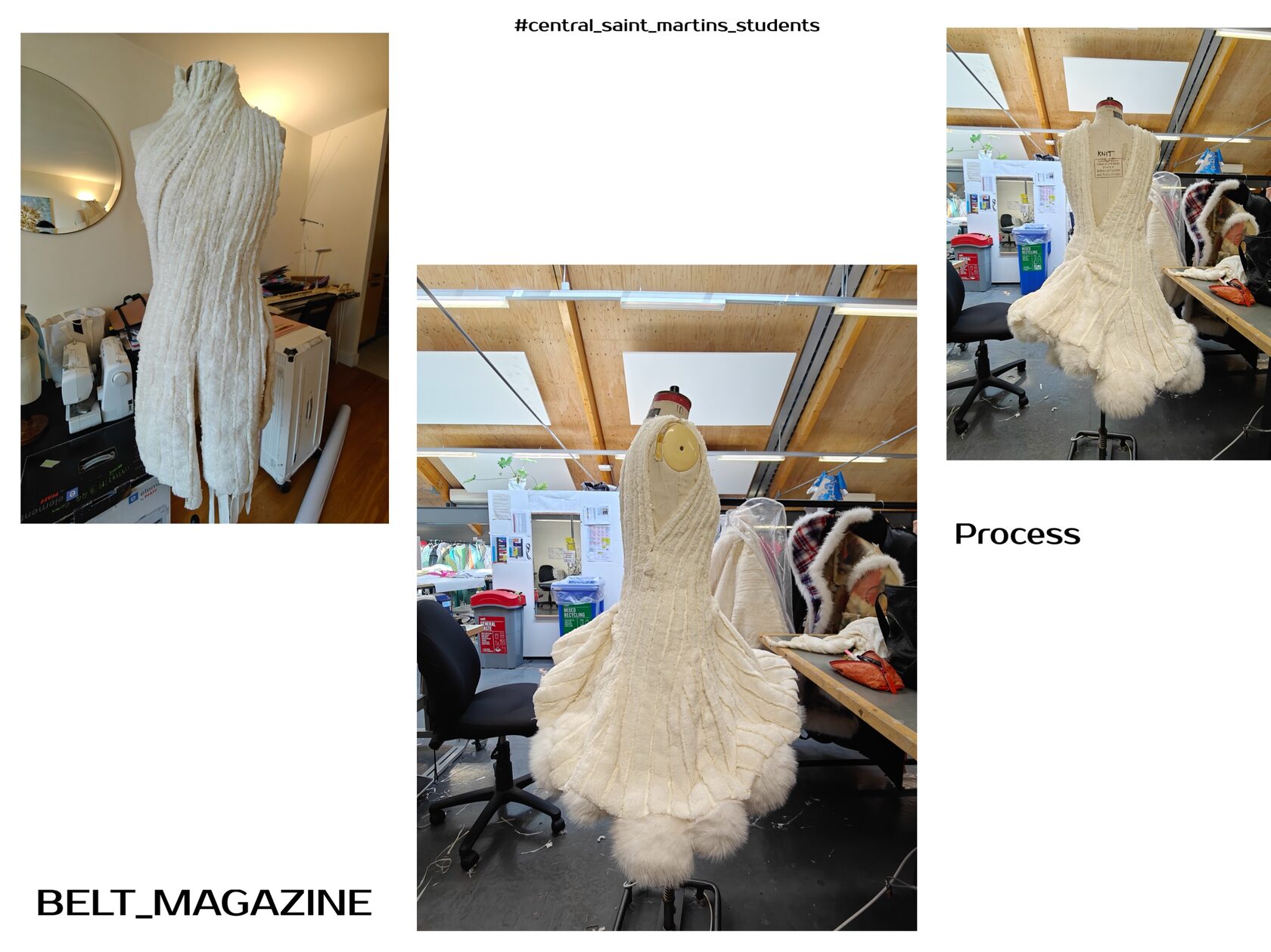
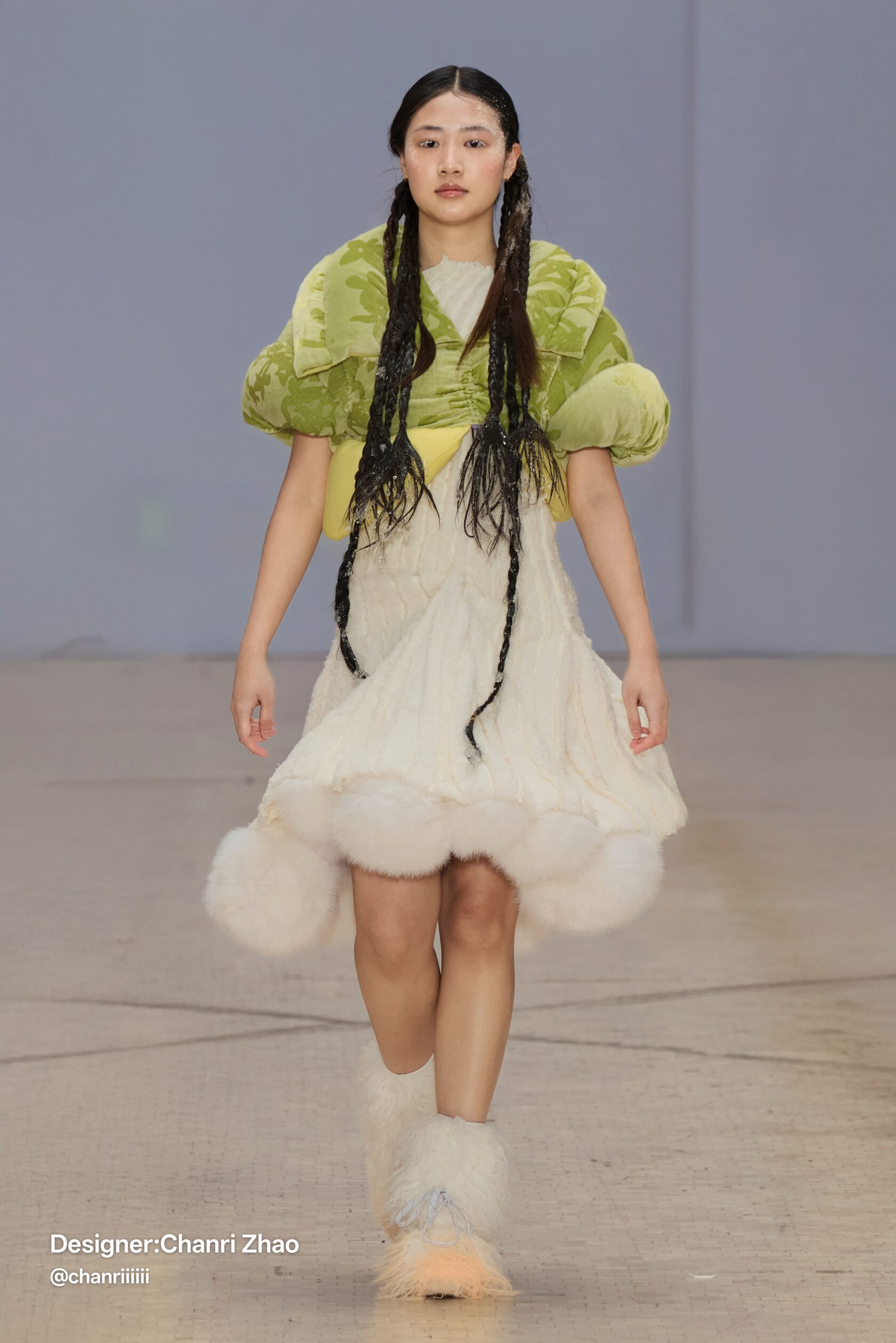
To summarize the entire material, we would like to share a piece of advice that Chanri gave to those just starting their journey in fashion design:
"For those who are just beginning their path in fashion, I want to say: fashion knows no boundaries. It doesn't matter where you come from, what you believe in, or what your style or experience is. What matters is what people can feel through your work. So be bold, stay true to yourself, and despite any difficulties, remember — only you can bring your dream to life."— Chanri
"For those who are just beginning their path in fashion, I want to say: fashion knows no boundaries. It doesn't matter where you come from, what you believe in, or what your style or experience is. What matters is what people can feel through your work. So be bold, stay true to yourself, and despite any difficulties, remember — only you can bring your dream to life."— Chanri
